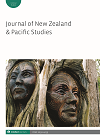
Full text loading...

Te Parapara Garden is the only complete pre-European-style Māori horticultural garden in the world. Historically inspired and empirically researched, it lies within the Hamilton Gardens on a young river terrace immediately adjacent to the Waikato River in Hamilton (Kirikiriroa), Aotearoa New Zealand. In this article, Wiremu Puke (Ngāti Wairere, Ngāti Porou) – a tohunga whakairo (master carver, including using pre-steel tools) and a tohunga whakapapa (genealogical expert on his tribal affiliations) of Ngāti Wairere (the mana whenua, or first people of the traditional ancestral tribal lands of Kirikiriroa) – describes the design and development of Te Parapara Garden from its initial concept in 2003 and the construction of its many features, including the waharoa (gateway), pou (carved pillars), pātaka (storehouse), whatarangi (small storehouse), taeapa (fencing) and rua kūmara (underground storage pit), and the sourcing and use of kōkōwai (red ochre). The garden was completed in 2010. Its ongoing functioning, including the annual planting and harvesting of traditional pre-European kūmara (sweet potato) using modified, mounded soils (puke or ahu), is also covered. The unique Te Parapara Garden is of great cultural importance and a source of pride, knowledge and understanding for national and international visitors and empirical and academic researchers.

Article metrics loading...

Full text loading...
References


Data & Media loading...

Publication Date:
https://doi.org/10.1386/nzps_00071_1 Published content will be available immediately after check-out or when it is released in case of a pre-order. Please make sure to be logged in to see all available purchase options.